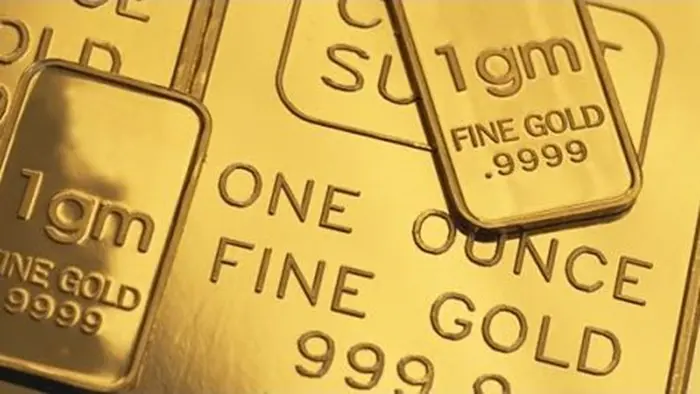Gold has been a symbol of wealth and luxury for centuries. Its value makes it a target for counterfeiting. Whether you own gold jewelry, coins, or bars, verifying its authenticity is essential. Fortunately, there are several methods to check if gold is real at home. In this article, we will explore three reliable ways to test gold without needing professional equipment. These methods include the magnet test, the acid test, and the water test.
Understanding Gold Purity
Before diving into the testing methods, it’s important to understand gold purity. Gold is often alloyed with other metals to increase its strength and durability. Pure gold, known as 24-karat gold, is too soft for everyday use. Therefore, gold items are typically made with varying levels of purity, such as 18-karat (75% gold) or 14-karat (58.3% gold). Knowing the karat value helps in determining the expected behavior during tests.
1. The Magnet Test
How the Magnet Test Works
Gold is a non-magnetic metal. This characteristic makes the magnet test a simple yet effective way to check for authenticity. If a gold item is attracted to a magnet, it contains other metals that are magnetic.
Materials Needed
A strong magnet (neodymium magnets are ideal)
The gold item you want to test
Step-by-Step Procedure
Gather Your Materials: Ensure you have a strong magnet and the gold item you wish to test.
Clean the Gold Item: Wipe the gold item with a soft cloth to remove any dirt or debris that might affect the test.
Perform the Test: Hold the magnet close to the gold item without touching it. Observe any movement or attraction.
Interpreting Results
No Attraction: If the gold item does not move or get attracted to the magnet, it is likely real gold.
Attraction: If the gold item is attracted to the magnet, it is likely not pure gold and may contain magnetic metals such as iron or nickel.
Limitations
While the magnet test is straightforward, it has its limitations. Some counterfeit gold items are made with non-magnetic metals, which can pass the magnet test. Therefore, it is advisable to use additional testing methods to confirm authenticity.
See Also: 9 Ways To Buy Gold Online
2. The Acid Test
How the Acid Test Works
The acid test is a more definitive method for verifying gold’s authenticity. This test involves applying a small amount of acid to the gold item and observing the reaction. Different karat golds react differently to acid, allowing for a more precise identification.
Materials Needed
Gold testing kit (includes acids for different karat levels, testing stone, and needles)
The gold item you want to test
Protective gloves
Safety goggles
Step-by-Step Procedure
Gather Your Materials: Ensure you have a gold testing kit, protective gloves, and safety goggles.
Clean the Gold Item: Wipe the gold item with a soft cloth to remove any dirt or debris.
Perform a Scratch Test: Rub the gold item on the testing stone to leave a visible mark.
Apply Acid: Apply a drop of acid corresponding to the suspected karat value onto the scratch mark.
Observe the Reaction: Observe the color change or reaction. Different acids will react differently depending on the gold’s purity.
Interpreting Results
No Reaction: If the gold remains unaffected by the acid, it matches the karat level of the acid used.
Green Reaction: A green reaction indicates a base metal, not gold.
Fading Mark: If the scratch mark fades away, the gold purity is lower than the karat level of the acid used.
Safety Precautions
The acid test involves corrosive chemicals. Always wear protective gloves and safety goggles to prevent skin and eye contact. Conduct the test in a well-ventilated area to avoid inhaling fumes.
Limitations
While the acid test is highly reliable, it can damage the gold item if not done carefully. It’s advisable to perform the test on a small, inconspicuous area or use a testing stone to avoid direct application on the gold item.
3. The Water Test
How the Water Test Works
The water test leverages gold’s density to verify authenticity. Gold is denser than many common metals used in counterfeit items. By measuring the buoyancy of the gold item in water, you can estimate its density.
Materials Needed
A container of water
A scale (preferably digital)
The gold item you want to test
Step-by-Step Procedure
Gather Your Materials: Ensure you have a container of water and a scale.
Weigh the Gold Item: Weigh the gold item using the scale and record its weight in grams.
Fill the Container: Fill the container with enough water to submerge the gold item.
Measure Water Displacement: Carefully place the gold item in the water and measure the amount of water displaced.
Calculate Density: Use the formula Density = Mass / Volume to calculate the density of the gold item.
Interpreting Results
High Density: Gold has a high density of approximately 19.3 grams per cubic centimeter. If the calculated density is close to this value, the item is likely real gold.
Low Density: A significantly lower density suggests the item is not pure gold or is made of another material.
Limitations
The water test requires precise measurements to be accurate. It may be challenging to measure small items accurately. Additionally, some counterfeit items are made with metals of similar density to gold, which can affect the test results.
Additional Considerations
Visual Inspection
Perform a thorough visual inspection of the gold item. Look for hallmarks or stamps indicating purity, such as “24K” or “18K”. Check for discoloration or tarnishing, which can indicate lower purity or counterfeit items.
Professional Appraisal
While home tests can provide a good indication of gold authenticity, a professional appraisal is the most reliable method. Jewelers and appraisers have specialized equipment and expertise to accurately assess gold items.
Combining Methods
Using multiple testing methods increases the reliability of your results. Combine the magnet, acid, and water tests to cross-verify the authenticity of your gold items.
Conclusion
Verifying the authenticity of gold at home is possible with simple tools and careful procedures. The magnet test, acid test, and water test each provide valuable insights into the purity of gold items. Understanding the limitations of each method and combining them can help ensure accurate results. However, for the most reliable assessment, consulting a professional appraiser is recommended. By using these methods, you can confidently determine if your gold is real and protect your investment.
Related topics:































